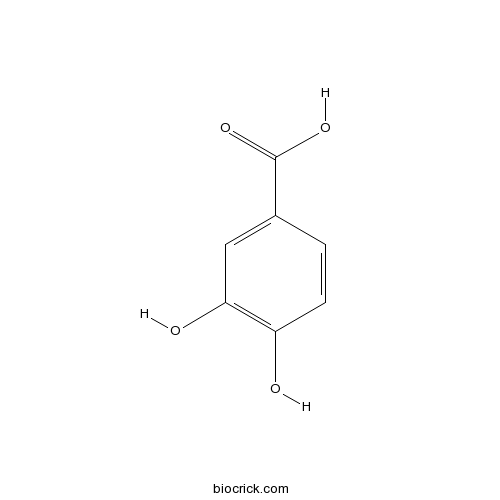Ardisia chinensis
Ardisia chinensis
1. The products in our compound library are selected from thousands of unique natural products; 2. It has the characteristics of diverse structure, diverse sources and wide coverage of activities; 3. Provide information on the activity of products from major journals, patents and research reports around the world, providing theoretical direction and research basis for further research and screening; 4. Free combination according to the type, source, target and disease of natural product; 5. The compound powder is placed in a covered tube and then discharged into a 10 x 10 cryostat; 6. Transport in ice pack or dry ice pack. Please store it at -20 °C as soon as possible after receiving the product, and use it as soon as possible after opening.
Natural products/compounds from Ardisia chinensis
- Cat.No. Product Name CAS Number COA
-
BCN4537
3,4-Dihydroxybenzoic acid99-50-3
Instructions

[Study on the chemical constituents of Ardisia chinensis].[Pubmed: 16913485]
The chemical constituents of Ardisia chinensis, which traditionally used in the area of Yao minority in Southern China, were analyzed and characterized. Seven compounds were obtained from the ethyl acetate fraction of ethanol extract of Ardisia chinensis. These 7 compounds were characterized by spectroscopic analysis and comparison with published data to be salicylic acid (1), 4-hydroxy-3-methoxy-benzoic acid (2), gallic acid ethyl ester (3), 4-hydroxy-3,5-dimethoxy benzoic acid methyl ester (4), protocatechuic acid (5), gallic acid (6) and catechin (7). All of them were isolated from this plant for the first time, and compound 7 was obtained from this genus for the first time.
In vitro antiviral activities of Chinese medicinal herbs against duck hepatitis B virus.[Pubmed: 16892461]
Fifty-six different Chinese medicinal herbs from 29 families were evaluated for their antiviral activities against duck hepatitis B virus (DHBV) in vitro. The DHBV DNA level in primary duck hepatocyte cultures was monitored by dot blot hybridization and the cytotoxicity was evaluated by MTT assay. Anti-DHBV activities were found more strongly in the aqueous extracts of Ardisia chinensis and Pithecellobium clypearia with selective indices of 2.6 and >2.7, respectively, which were comparable to that of 2',3'-dideoxycytidine. Further research on the isolation of the active antiviral phytochemicals from these herbs may provide alternative options for the treatment of chronic hepatitis B.
Antiviral activity and constituent of Ardisia chinensis benth against coxsackie B3 virus.[Pubmed: 16775812]
Ardisia chinensis Benth is a medicinal plant traditionally used in the area of Yao minority in Southern China. The in vitro antiviral activities of extracts and fractions from Ardisia chinensis were tested by the cytopathic effect (CPE) reduction assay in the present study. As a result, both the aqueous extract and the 95% ethanol extract of Ardisia chinensis showed in vitro antiviral activity against Coxsackie B3 (Cox B3) virus to different extents, and the aqueous extract possessed more potent activity than the ethanol extract. Bioassay-guided fractionation revealed that the antiviral activity of Ardisia chinensis was attributed mainly to its high polar fractions, and finally identified to be a polysaccharide. The Ardisia chinensis polysaccharide (ACP) fractionated from the aqueous extract exhibited a significant antiviral effect against Cox B3 with a 50% inhibitory concentration (IC(50)) of 3.9 microg/mL and a selective index (SI) over 256. Preliminary characterization indicated that ACP is a neutral polysaccharide in which d-glucose is the major component. The average molecular weights of ACP were determined to be 40037 Da (Mw), 28297 Da (Mn) and 33758 Da (Mp) by gel permeation chromatography.


